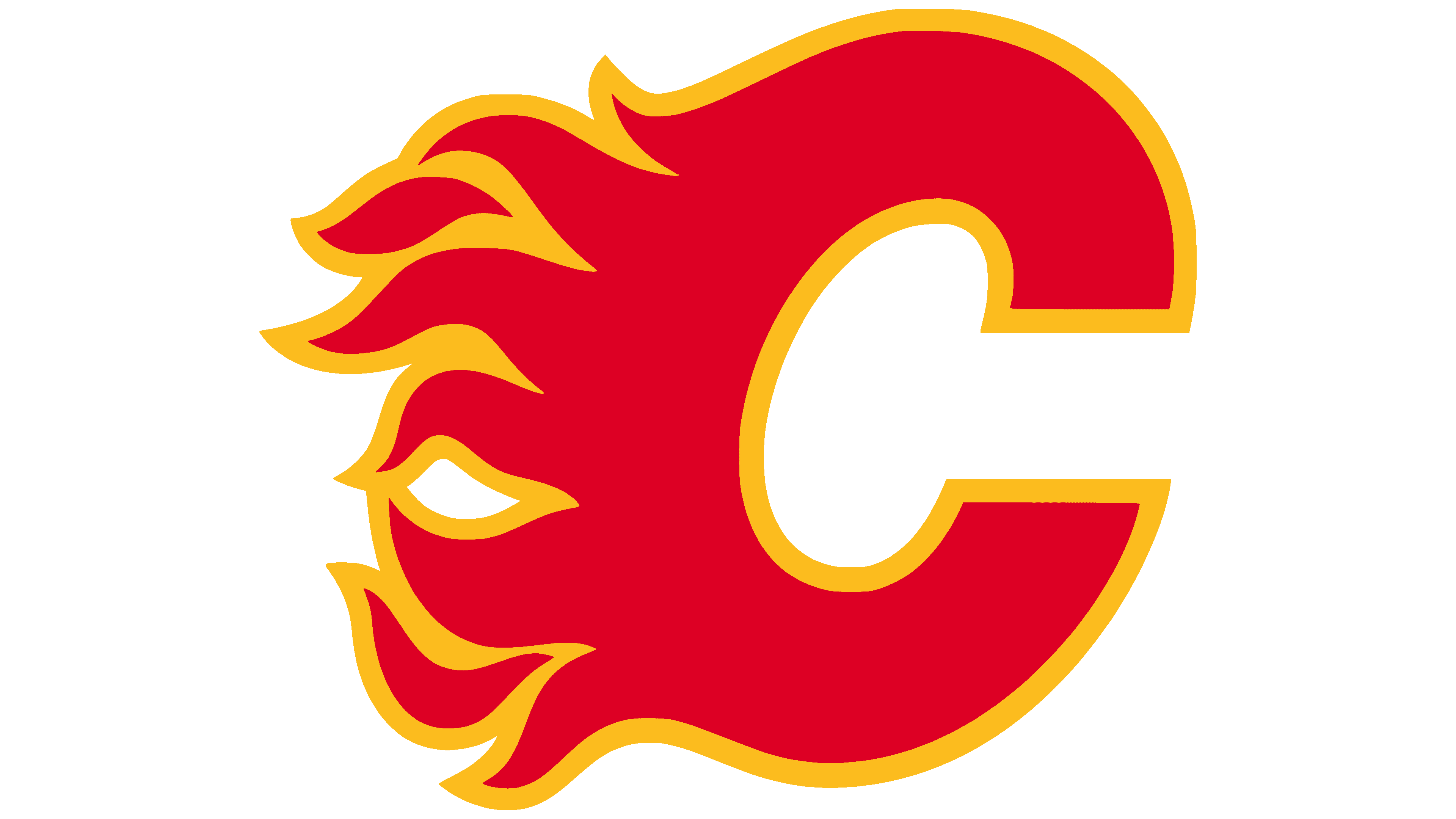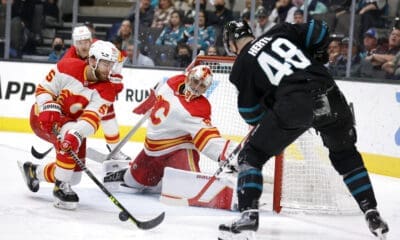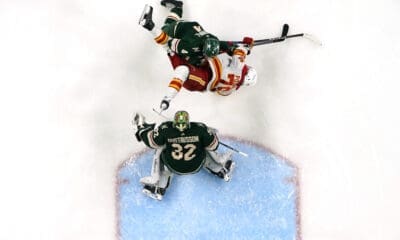Calgary Flames
Flames at the Half: Does the Potential for Improvement Exist?

(All numbers from NHL.com and Behind the Net)
The Flames wrapped up their 41st game of the season the other night with a 3-1 loss to the Vancouver Canucks, and are currently placed 14th in the Western Conference. They are fifth in the Northwest with a record of just 7-7-0 against their division rivals and 22nd overall in the NHL with just 39 of a possible 82 points. After winning four consecutive games to close out the calender year, the Flames have now lost two in a row, falling to two games under .500, with a winning percentage of .439%.
With just three goals in those two losses, goal scoring has once again proved to be one of the club’s primary problems. As PrairieStew points out in his analysis of the club through 41 games, the Flames are in for a slight improvement in the offensive department by the time this season wraps up, but will it be enough for the them to make the jump into a playoff position? Despite out-shooting their opposition regularly by about 3.3 shots per game (and winning more often than not while doing so), they are currently ranked 22nd in the league in goals per game and 19th in total offence, with only three teams who are currently in a playoff position below them. Rene Bourque leads the team in ES goals/60 with 1.08 while Alex Tanguay is currently leading the way in the ES points/60 category with 2.55, but both have been absent from the scoresheet recently.
73 goals for and 73 against at ES would probably put the Flames somewhere in the middle of the pack; the club is still allowing less shots than they’re generating per game at 27.7, and Kipper’s .921 SV% at ES is still good enough to give his team a chance in most games. While the Flames may be little above middling at evens, a faulty powerplay is again to blame for a portion of the club’s scoring woes. Calgary has had the fourth most powerplay opportunities in the league thus far this season, yet ranks 20th in the league with the man advantage, operating at just over 15%, and has allowed a third-worst six shorthanded goals against. Niklas Hagman is leading the team by a fair margin in PP goals and points per sixty, with 2.88 and 4.61 respectively, with the next closest competitors being Olli Jokinen and Anton Babchuk. Tanguay still has zero goals with the man advantage while the leading altogether PPP producer is Jarome Iginla with just ten points–5 goals and 5 assists–good for a tie for 70th in the league.
Moreover, the Flames rank 12th in the league in times shorthanded and 15th in overall PIMS, which means that they are actually drawing more penalties than they're taking for what feels like the first time in years. This team has ranked near the top of the league in PIMS nearly every season during Darryl Sutter's reign, but despite a strong start, the Flames' penalty kill hasn't followed suit this season, ranking 24th in the league.
The Flames’ special teams struggles are undoubtably due in part to Miikka Kiprusoff‘s miserable SV% both when his team is on the powerplay (.897) and when they are shorthanded (.844). When the Flames boasted one of the league’s best PK units back in 2008-09, Kipper’s SV% in shorthanded situations for his club was much closer to .900. Despite the fact that that season was one of his worst at even strength and factored into the demise of a team that was so strong possession-wise, he was likely the main driver of results on the PK.
Lack of scoring can probably be reduced to three significant problems. Despite getting a recent vote of confidence from both Jay Feaster and Flames management, coaching invariably has something to do with it, specifically on special teams. Many Flames fans have regularly questioned some of Brent Sutter’s choices when it comes to the team’s lineup on a nightly basis–his line combinations, the players he chooses to throw over the boards in certain situations (Robyn Regehr has started more in the O-Zone than Nik Hagman) and against certain players–although to be fair, he can only work with the players he’s been given, which is/was his brother’s doing. His team lacks a real power-versus-power matchup yet has been out-shooting its opposition on most nights (although those shots may not always lead to chances or goals), and the only players in the red in terms of ES Corsi/60 rates are Robyn Regehr and Rene Bourque, with the former facing some pretty tough competition most games.
The second problem in terms of lack of scoring lies potentially in the Flames’ first line. Each of Jarome Iginla, Olli Jokinen, and Alex Tanguay have gone lengthy periods of inconsistency and time without a goal this season, and efforts to remedy that by switching in players like Matt Stajan have often proved to be temporary fixes at best. The aforementioned trio has a combined total of 34 goals and 87 points through 41 games this season, which I’d have to imagine is on the low side of things as far as first lines go, considering the two Sedins alone have already totaled 100 points for the Canucks and Sidney Crosby himself already has 66.
Tanguay is already in line for an improvement over last season's 37 points, although Jarome Iginla and Olli Jokinen may not be so lucky. Add that to the fact that the majority of the Flames' top-nine forwards seem to have never returned from the Christmas break and the so-called fourth line has been doing the heavy lifting recently, and it doesn't look like the Flames in line for a boost in the goals department any time in the near future, barring some sort of move from interim GM Jay Feaster.
The third problem is of course, good old fashioned percentages–otherwise known as luck. While the Flames do bring their misfortune upon themselves on most occasions, they have outshot their opposition in 28 games this season and have won only half of them, while they possess a sub-.500 record in games where they were outshot. As discussed in the comments here, the Flames have struggled to turn shots into scoring chances and actual goals, and despite the fact that their cumulative underlying stats largely indicate that the ice has been tilted in their favour, their ES shooting percentages haven't always followed suit. Given the team's tendency towards out-shooting their opponents this season, this could possibly be a function of shot quality more than quantity, although the debate about the relevance of the former continues.
So does the potential for improvement for this season's iteration of the Flames exist? As has been discussed at length around these parts, this team is stacked with cap-heavy contracts doled out to aging, virtually immovable players who, save a few examples, aren't exceptionally talented. After missing the playoffs last season with 90 points and the cut-off point being 95, the Flames are looking at having to accumulate 50+ points of an available 82 if they hope to squeeze into the top eight–meaning achieving and maintaining a winning percentage of over .500, something they have yet to do for a consistent stretch of games this season. The number of games the Flames can afford to lose in regulation is dwindling every day as each game in which they fail to extract at least a point delivers another blow to the team's hopes of making the post-season; the potential for improvement as it stands is certainly there, but it is very limited.
by Hayley Mutch









